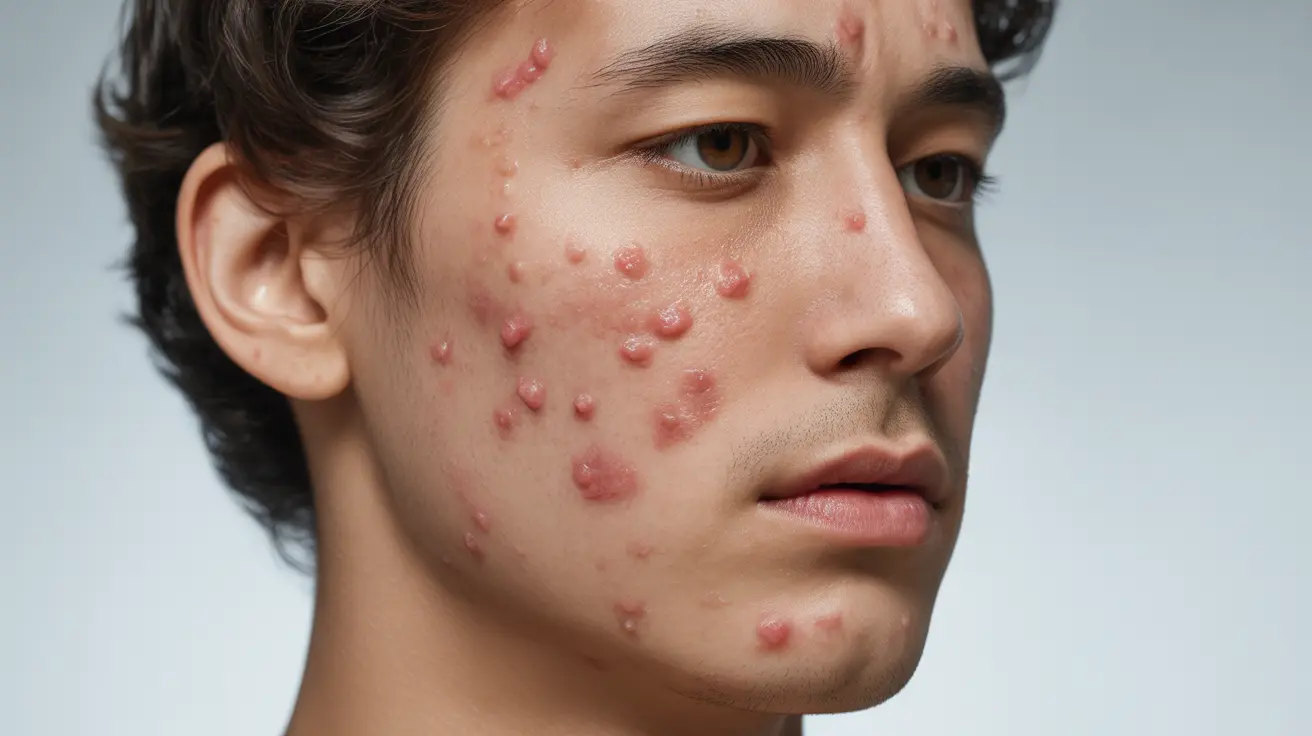When life gets overwhelming, your skin often becomes the unwanted messenger of your stress levels. Stress acne is a common but frustrating skin condition that affects many people during periods of heightened anxiety and pressure. Understanding what stress acne looks like and how to identify it is the first step toward effective treatment.
This comprehensive guide will help you recognize stress-related breakouts, distinguish them from other types of acne, and learn practical strategies for management and prevention.
Identifying Stress Acne
Stress acne has distinctive characteristics that set it apart from regular breakouts. These blemishes typically appear as small, red, inflammatory papules clustered in specific areas of the face. Unlike hormonal acne, which often appears along the jawline and chin, stress-related breakouts commonly show up in the following areas:
- T-zone (forehead, nose, and chin)
- Cheeks
- Around the mouth
- Upper forehead
Common Characteristics of Stress Acne
Stress-induced breakouts often display these notable features:
- Sudden appearance of multiple small pimples
- Redness and inflammation
- Increased oil production
- Tender or sensitive to touch
- Usually appears within 24-48 hours of a stressful event
The Stress-Skin Connection
When you experience stress, your body releases cortisol, often called the "stress hormone." This surge in cortisol can trigger several skin responses:
- Increased sebum production
- Inflammation
- Slower skin healing
- Compromised skin barrier function
Distinguishing Stress Acne from Hormonal Breakouts
While both stress and hormonal acne can appear simultaneously, there are key differences in their presentation and timing. Stress acne tends to appear suddenly and correlates with stressful events, while hormonal acne often follows a cyclical pattern and appears in specific areas of the face.
Managing Stress Acne at Home
Several effective home remedies and lifestyle changes can help control stress-related breakouts:
Skincare Solutions
- Gentle cleansing twice daily
- Oil-free, non-comedogenic moisturizers
- Spot treatments with salicylic acid or benzoyl peroxide
- Regular exfoliation (1-2 times per week)
Lifestyle Modifications
Managing stress acne requires a holistic approach that addresses both skin care and stress reduction:
- Regular exercise
- Adequate sleep (7-9 hours nightly)
- Meditation or mindfulness practices
- Balanced, nutrient-rich diet
- Proper hydration
Frequently Asked Questions
What does stress acne look like and where does it usually appear on the face?
Stress acne typically appears as small, red, inflammatory bumps concentrated in the T-zone, cheeks, and around the mouth. These breakouts often emerge suddenly and are accompanied by increased oil production and skin sensitivity.
How can I tell if my acne is caused by stress or hormones?
Stress acne usually appears suddenly during or after stressful periods and can occur anywhere on the face. Hormonal acne tends to follow a cyclical pattern, typically appearing along the jawline and chin, and often correlates with menstrual cycles.
What are the best ways to treat and manage stress acne at home?
The most effective home treatments include gentle cleansing, using non-comedogenic products, applying spot treatments with salicylic acid or benzoyl peroxide, and maintaining a consistent skincare routine. Avoid touching your face and keep pillowcases clean.
Can lifestyle changes like diet, sleep, or exercise help prevent stress acne?
Yes, lifestyle modifications play a crucial role in preventing stress acne. Regular exercise, adequate sleep, a balanced diet rich in antioxidants, and stress-management techniques like meditation can significantly reduce stress-related breakouts.
Why does stress make acne worse and how does it affect my skin?
Stress triggers the release of cortisol, which increases sebum production and inflammation in the skin. This hormone surge can also compromise the skin barrier, slow healing, and make existing acne worse. Additionally, stress can affect sleep patterns and dietary choices, further impacting skin health.




